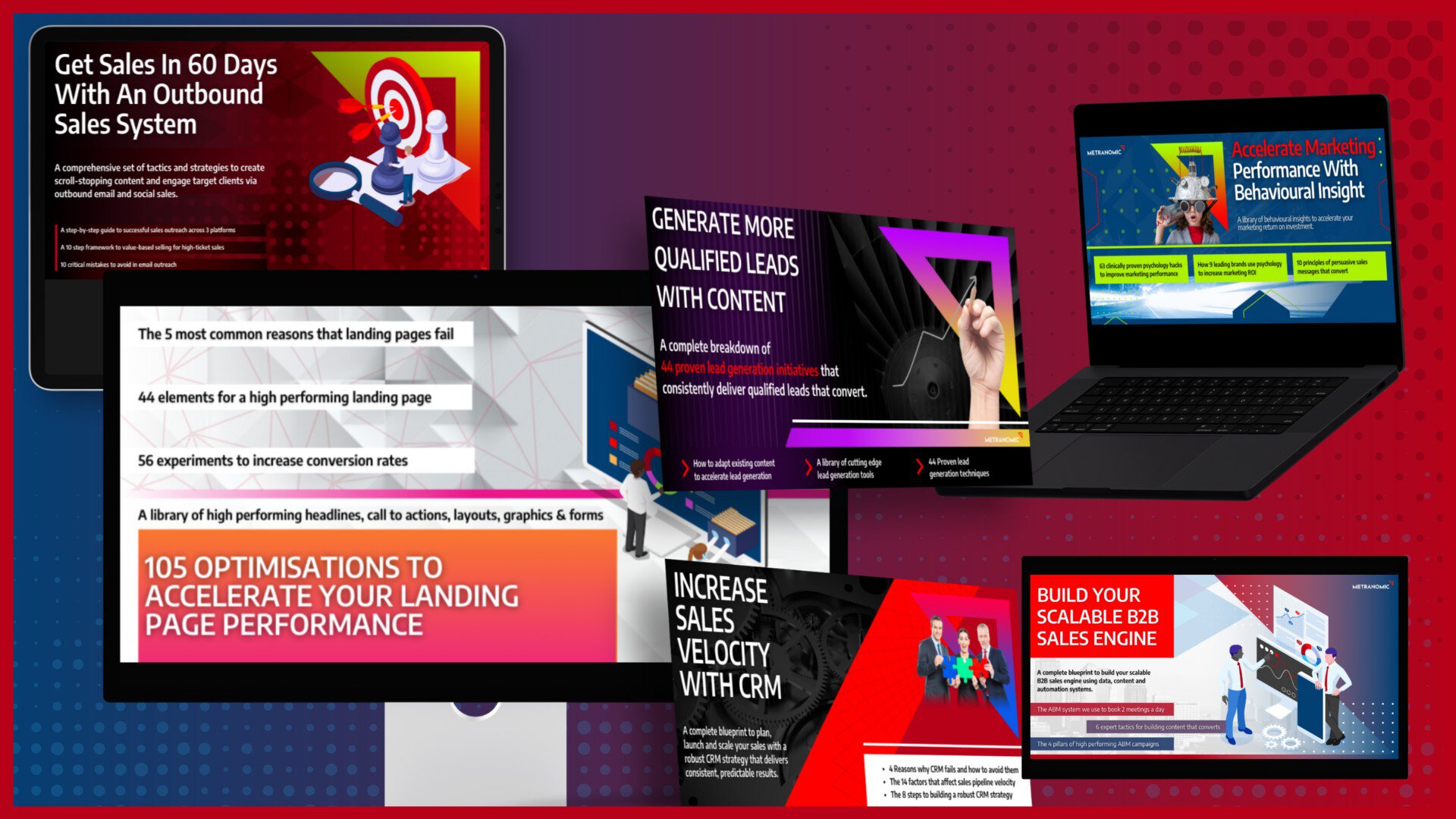Guessing your way through sales strategies is no longer an option. With the right sales analytics, you can turn raw data into actionable insights that drive conversions and maximise sales performance. But how do you get from data overload to clear, strategic decisions?
This guide is your roadmap to mastering sales analytics, breaking down the process into manageable steps. From identifying the metrics that matter to leveraging predictive analytics and overcoming implementation challenges, you’ll discover the tools and techniques that can transform your sales operations.
- Identify Key Sales Metrics: Focus on critical sales metrics like conversion rates and sales cycle length to gain insights into your sales performance and pinpoint areas for improvement.
- Leverage Predictive Analytics: Use predictive analytics to forecast future sales trends and identify potential opportunities, ensuring your strategies are always ahead of the curve.
- Implement the Right Tools: Integrate CRM platforms and specialised sales analytics tools to streamline data collection, analysis, and reporting, making informed decisions easier.
- Overcome Implementation Challenges: Address common obstacles such as data quality issues and resistance to change by adopting best practices and fostering a data-driven culture within your team.
- Optimise Sales Conversions: Apply analytics to segment leads, personalise sales pitches, and track strategy effectiveness, leading to improved conversion rates and sales outcomes.
- Stay Ahead with Future Trends: Embrace emerging trends like AI and machine learning in sales analytics to enhance your predictive capabilities and stay competitive in an evolving market.
What Are Sales Analytics?
Sales analytics is the meticulous practice of deriving insights from sales data. This involves a variety of techniques and tools, from advanced predictive sales analytics and sophisticated modelling techniques to straightforward spreadsheets. The primary aim is to gain a clearer understanding of the data, which can then be utilised to set goals, define metrics, and devise a comprehensive strategy for the sales team.
What Is the Purpose of Sales Analytics?
Sales analytics seeks to answer pivotal questions such as, “What trends are emerging in our sales data?” or “What factors are driving upselling and cross-selling opportunities?” or “How are our sales representatives performing across different regions?”
Sales teams may engage in different types of sales analytics, each tailored to specific goals. For example, to meet the current quarter’s targets, a sales pipeline analysis might be necessary to identify which customers are most likely to close. Conversely, to set targets for the forthcoming year, a broader revenue analysis might be conducted at the year’s end.
The Significance of Analytics in Modern Sales Success
In today’s digitised business environment, vast amounts of data are generated daily. This data is a treasure trove of information that can significantly enhance a business’s success when harnessed effectively. By leveraging this data through sales analytics, businesses can gain critical insights into their customers.
Sales analytics empowers companies to make informed, data-backed decisions. It facilitates improved forecasting, enables predictive sales analytics, bridges gaps in performance management, and ultimately enhances sales conversions and performance.
Advanced Sales Analytics
Predictive sales analytics is a sophisticated form of analytics that employs predictive algorithms and patterns in historical data—typically sourced from a company’s CRM or ERP software. This type of analytics helps create forecasts, anticipate prospect behaviour, and inform the design of more effective campaigns for both B2B and B2C companies.
Conducting forward-thinking sales analysis without predictive sales analytics is possible but can be laborious and prone to human error. Predictive sales analytics, relying on AI and machine learning, shapes forecasts and generates actionable insights, significantly reducing the effort and guesswork involved.
These advanced sales analytics tools are increasingly being adopted by companies of all sizes to steer their sales efforts. They help create more accurate forecasts and key sales reports that anticipate future customer behaviour, thereby enhancing overall sales conversions.
What Matters Most?
Focusing on high-value sales activities rather than tracking every metric brings the greatest return on investment. Prioritising these impactful actions typically helps drive more predictable revenue growth. A unified view of both demand generation and sales analytics is critical; clients often discover that linking these metrics provides clarity across the customer journey, improving resource allocation. Leading indicators are another key area where we guide our clients to focus, as they allow teams to make proactive adjustments and fine-tune their sales efforts before issues arise, creating a more resilient sales strategy.Get In Touch
What types of sales analytics reports do I need to optimise my sales performance?
Key Sales Analytics Reports
Sales analytics tools offer a variety of reports that are crucial for understanding and optimising sales performance. Here are five key reports that can drive advanced sales analytics and improve sales outcomes:
- Pipeline Report An accurate and comprehensive pipeline is essential for assessing the health of your business. As a sales leader, you need to know which deals are likely to close, which ones are at risk, and the overall impact each deal has on your bottom line. This clarity helps in improving sales conversions by allowing precise focus on high-potential deals.
- Conversion rates Report Conversion rate, a critical metric in sales analytics, measures your ability to turn prospects into leads and leads into customers. This metric can provide deep insights into the effectiveness of your overall sales strategy and the performance of individual sales representatives. By closely monitoring conversion rates, you can identify stages in your sales lifecycle where your team excels or needs improvement, thus enhancing predictive sales analytics.
- Average Deal Size Report Knowing your average deal size is crucial for revenue prediction and monitoring the health of your sales pipeline. For example, if your revenue target for a quarter is £200,000 and your average deal size is £20,000, you’ll need to secure ten deals to meet your goal. Keeping tabs on this metric helps in aligning your sales strategies and resources effectively.
- Average Sales Cycle Length Report This metric indicates the average time it takes for a sales representative to close a deal. It is a straightforward yet powerful indicator of individual and overall sales process efficiency. Establishing an ideal sales cycle length benchmark allows you to identify and address performance issues, ultimately leading to better sales conversions.
- Won and Lost Deals Analysis Report To fully understand your business’s performance, it’s vital to track all deals, both won and lost. Analysing these deals can reveal patterns such as features that attract prospects or common reasons for losing to competitors. This analysis provides valuable insights into your product’s strengths and weaknesses, helping to refine your sales strategy and improve future sales outcomes.
By utilising these sales analytics tools and reports, companies can gain actionable insights that drive advanced sales analytics, ultimately leading to enhanced sales performance and improved sales conversions.
Source: McKinsey
Sales Analytics Tools
How to Use CRM as a Sales Analytics Tool
CRM analytics are crucial for showcasing your company’s sales and customer service performance. By leveraging CRM analytics, businesses can gather customer data to inform smarter business decisions. Typically, CRM software is utilised to obtain these analytics, automating the entire data collection and report generation process.
Tracking the numerous components of CRM manually is virtually impossible without software. Hence, many CRM software platforms are available to suit various business needs. In addition to CRM analytics, you should seek CRM software that offers workflow automation, extensive third-party integrations, and other features to drive sales through your CRM system.
Alongside your CRM analytics tracking, it is essential to run several reports that compile your analytics into actionable insights. These reports include:
- Profitability
- Sales forecasting
- Sales conversion
- Sales cycle
- Sales pipeline
Leading Sales Analytics Tools
- Price: Plans starting at £40 per month
HubSpot Sales Hub offers a comprehensive suite of sales analytics tools, enabling the creation and maintenance of virtually any type of data report. The software includes features for tracking deal forecasts, sales performance reports, and productivity logs, among other key metrics and analyses.
A standout feature of HubSpot Sales Hub is its accessibility. The user-friendly interface combines powerful functionality with ease of use. Multiple customisable dashboards provide visibility into all your sales analytics reports. The platform also supports collaborative work, allowing you to set custom access privileges for team members to view or modify the reports.
- Price: Plans starting at £9.99 per user per month
Power BI, a sales analytics software and data visualisation tool from Microsoft, scales from individual users to entire organisations. This flexibility ensures that all members have access to the necessary sales analytics data to make informed, effective sales decisions.
The platform boasts a vast array of powerful analytics resources, including hundreds of data visualisation methods, built-in AI capabilities, and a robust Excel integration. It also supports pre-built and custom data connectors, all protected by top-tier security and data loss prevention frameworks.
- Price: Plans starting at £22 per month
Zoho Analytics is a self-service BI and data analytics tool known for its integrative capabilities and attractive data visualisation features. The platform allows users to transform massive volumes of raw data into actionable, straightforward reports, all organised within a sleek interface.
Notably, Zoho Analytics excels at integrating data from multiple sources. Whether your data resides in HubSpot, Excel, or Google Cloud Storage, Zoho Analytics can seamlessly combine these datasets into cross-functional reports and dashboards.
- Price: Plans starting at £12 per month
Salesforce Tableau enhances efficiency, facilitates faster trend spotting, predicts outcomes, and provides AI-based guidance on optimal actions. The platform’s action framework enables users to take immediate actions, such as collaborating in Chatter, updating records, and sharing visualisations with the team.
Being native to Salesforce, Tableau CRM ensures seamless integration of data into every action and decision within the Salesforce ecosystem.
Our Tactical Recommendations
From our experience, analysing customer satisfaction data after the sale provides valuable insights for upselling and cross-selling opportunities, something many clients overlook. By focusing on post-sale analytics, companies can uncover growth areas within their existing client base. Predictive analytics has also proven effective for anticipating customer needs, helping clients direct their sales teams towards high-impact opportunities.Get In Touch
Data and Sales Analytics Strategy
How to Build Your Sales Data Strategy
Building a robust sales data strategy aligns your efforts with your Data Vision and Data Mission Statements. This strategy integrates all necessary elements—People, Process, Technology, and Data—to derive value from your data in a straightforward and executable manner.
Your data strategy is not only a roadmap but also a crucial communication tool. It ensures that your organisation supports the initiatives and allocates the necessary resources. More importantly, it brings your organisation to the next level of detail, allowing everyone to see the tangible changes and benefits. Ultimately, a well-defined data strategy demonstrates how it will help achieve organisational goals.
Source: McKinsey
Getting Started with Your Data Strategy
Most data strategies revolve around the concept of getting the right data into the right hands to facilitate informed decision-making. This is increasingly important with the growth of predictive sales analytics, machine learning (ML), and artificial intelligence (AI). Each organisation is unique, making the articulation of your Data Vision and Mission Statements critical.
Strategic Questions to Consider
- What data supports your organisation’s vision and mission, and who uses it? This exercise involves both a top-down (strategic) and bottom-up (operational) approach to ensure alignment.
- How is data currently used, and where are there opportunities for improvement? Most organisations have known issues. However, these can evolve as people develop workarounds or even create new data to meet their needs.
- Do you have strategic initiatives in planning or underway? Identify the data necessary for their success. Determine who will use the data and how and why they will use it.
Incorporating Data Strategy Elements
During these discussions, it’s essential to incorporate each data strategy element (People, Process, Technology, and Data) to develop a comprehensive understanding of future functions. These elements will help segment your needs and group them into definable projects, leading to the creation of high-level data needs structured into objectives and capabilities.
Stay focused on the objectives and capabilities at this stage. Detailed solutions will come later during assessment and road mapping. Begin by framing discussions around the core elements, ensuring each data need or capability incorporates the following:
- People: Who uses your data and why? What skills and experience are required to execute the strategy and achieve the vision?
- Process: How is data used in your processes? What procedures are needed to extract value from your data?
- Technology: What capabilities are needed to reach your vision?
- Data: What types of internal and external data are required? What level of data quality and history is necessary? What level of integration and security is needed?







